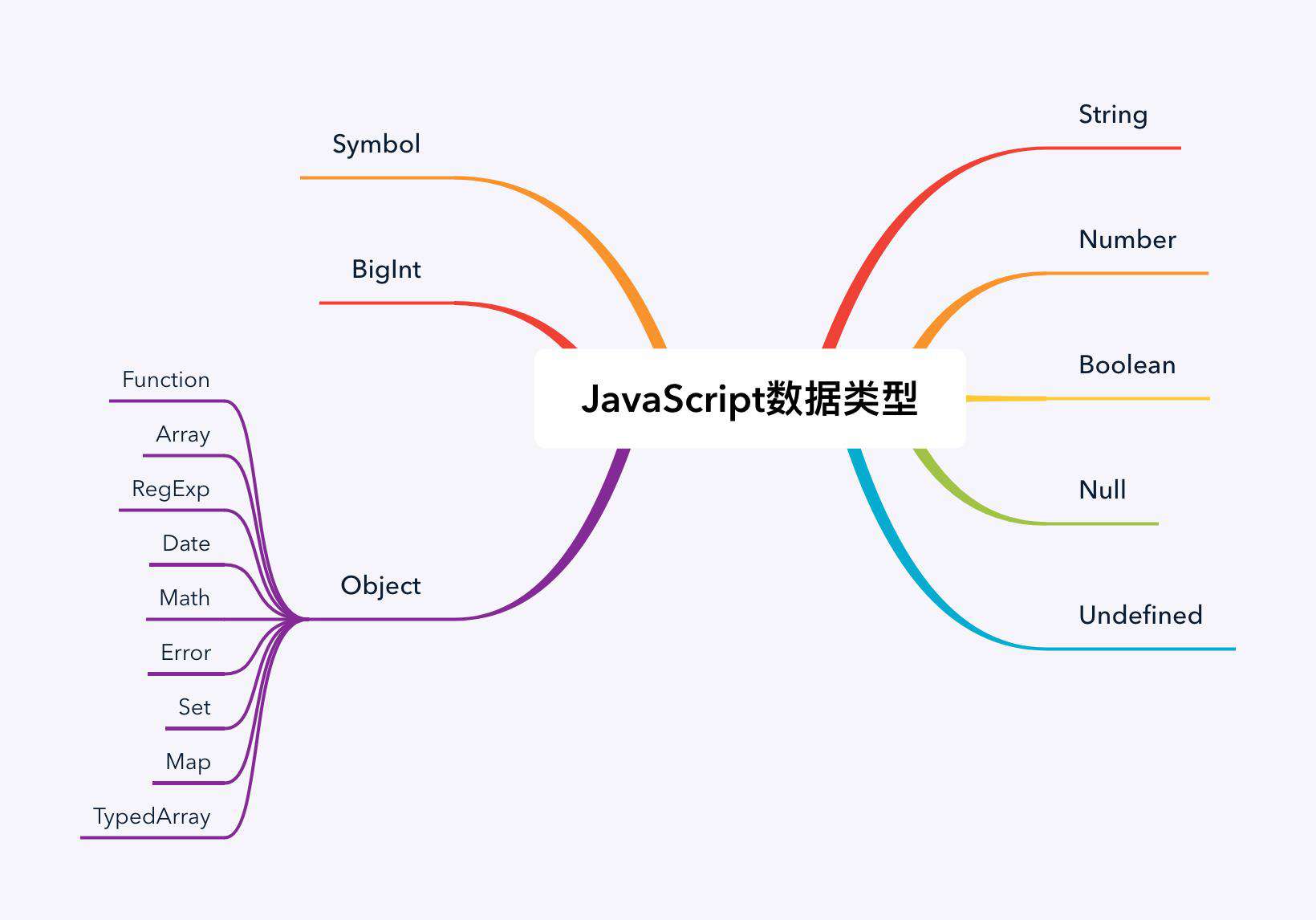美味值:?????
口味:芥末虾仁球
为了和易老师对线,我们先来简单复习下。
JavaScript 的数据类型包括原始类型和对象类型:
- 原始类型:Null、Undefined、Number、String、Boolean、Symbol、BigInt
- 对象类型:Object
我们习惯把对象称为引用类型,当然还有很多特殊的引用类型,比如 Function、Array、RegExp、Math、Date、Error、Set、Map、各种定型数组 TypedArray 等。

原始类型值保存在栈中,对象类型值保存在堆中,在栈中保留了对象的引用地址,当 JavaScript 访问数据的时候,通过栈中的引用访问。
在 JavaScript 中,原始类型的赋值会完整复制变量值,而对象(引用)类型的赋值是复制引用地址。
再来两道常考面试题练练手
let a = {
name: '前端食堂',
age: 2
}
let b = a
console.log(a.name)
b.name = '童欧巴'
console.log(a.name)
console.log(b.name)
// 前端食堂
// 童欧巴
// 童欧巴
第一题 So Easy,闭着眼睛也能答对。
let a = {
name: '前端食堂',
age: 2
}
const expand = function(b) {
b.age = 18
b = {
name: '童欧巴',
age: 25
}
return b
}
let c = expand(a)
console.log(c.age)
console.log(a.age)
console.log(a)
// 25
// 18
// {name: "前端食堂", age: 18}
这道题可能有些同学会答错,我们来一起分析一下:
expand 函数传进来的参数 b,其实传递的是对象在堆中的内存地址值,通过调用 b.age = 18 可以改变 a 对象的 age 属性。
但是 return 又把 b 变成了另一个内存地址,将 {name: "童欧巴", age: 25} 存入,导致最后返回 a 的值就变成了 {name: "童欧巴", age: 25}
接下来让我们以热烈的掌声,欢迎易老师闪亮登场!

- typeof
- instanceof
- constructor
- Object.prototype.toString.call()
1.typeof
typeof 'a' // 'string'
typeof 1 // 'number'
typeof true // 'boolean'
typeof undefined // 'undefined'
typeof Symbol('a') // 'symbol'
typeof 1n // 'bigint'
typeof null // 'object'
typeof function() {} // 'function'
typeof [] // 'object'
typeof {} // 'object'
typeof /a/ // 'object'
typeof new Date() // 'object'
typeof new Error() // 'object'
typeof new Map() // 'object'
typeof new Set() // 'object'
两条结论:
- typeof 可以判断除了 null 以外的原始类型。
- typeof 只能判断对象类型中的 Function,其他判断不出来,都为 object。
typeof 检测 null 时返回 object,是最初 JavaScript 语言的一个 Bug,为了兼容老代码一直保留至今。
如果想了解更多,请戳下面链接。
- 链接
Tips
这里不得不提一下 NaN,毕竟我们都知道它戏比较多。
typeof NaN // number
F**k NaN!
2.instanceof
检测构造函数的 prototype 属性是否出现在某个实例对象的原型链上。
也就是使用 a instanceof B 判断的是:a 是否为 B 的实例,即 a 的原型链上是否存在 B 的构造函数。
console.log(1 instanceof Number) // false
console.log(new Number(1) instanceof Number) // true
const arr = []
console.log(arr instanceof Array) // true
console.log(arr instanceof Object) // true
const Fn = function() {
this.name = '构造函数'
}
Fn.prototype = Object.create(Array.prototype)
let a = new Fn()
console.log(a instanceof Array) // true
两条结论:
instanceof可以准确判断对象(引用)类型,但是不能准确检测原始类型。- 由于我们可以随意修改原型的指向导致检测结果不准确,所以这种方法是不安全的。
好,满足。
虽然 instanceof 不能检测原始类型,但是有一种方法可以让其用于检测原始类型。
Symbol.hasInstance 允许我们自定义 instanceof 的行为。
class PrimitiveNumber {
static [Symbol.hasInstance] = x => typeof x === 'number';
}
123 instanceof PrimitiveNumber; // true
class PrimitiveString {
static [Symbol.hasInstance] = x => typeof x === 'string';
}
'abc' instanceof PrimitiveString; // true
class PrimitiveBoolean {
static [Symbol.hasInstance] = x => typeof x === 'boolean';
}
false instanceof PrimitiveBoolean; // true
class PrimitiveSymbol {
static [Symbol.hasInstance] = x => typeof x === 'symbol';
}
Symbol.iterator instanceof PrimitiveSymbol; // true
class PrimitiveNull {
static [Symbol.hasInstance] = x => x === null;
}
null instanceof PrimitiveNull; // true
class PrimitiveUndefined {
static [Symbol.hasInstance] = x => x === undefined;
}
undefined instanceof PrimitiveUndefined; // true
代码来源下面链接。
- 有没有一种方法可以将instanceof用于原始JavaScript值?
手写 instanceof
const myInstanceof = function(left, right) {
if (typeof left !== 'object' || left === null) return false
let proto = Reflect.getPrototypeOf(left)
while (true) {
if (proto === null) return false
if (proto === right.prototype) return true
proto = Reflect.getPrototypeOf(proto)
}
}
const arr = []
console.log(myInstanceof(arr, Array)) // true
console.log(myInstanceof(arr, Object)) // true
console.log(myInstanceof(arr, RegExp)) // false
要理解 instanceof 的工作原理,就必须理解原型链,对 JavaScript 原型链掌握的不够深刻的同学可以戳下面链接学习。
- JavaScript深入之从原型到原型链
- 如何回答面试中的JavaScript原型链问题
3.constructor
对于数值直接量,直接使用 constructor 是会报错的,这个错误来自于浮点数的字面量解析过程,而不是 "." 作为存取运算符的处理过程。
在 JS 中,浮点数的小数位是可以为空的,因此 1. 和 1.0 会解析成相同的浮点数。
// 所以需要加上一个小括号,小括号运算符能够把数值转换为对象
(1).constructor // ƒ Number() { [native code] }
// 或者
1..constructor // ƒ Number() { [native code] }
const a = '前端食堂'
console.log(a.constructor) // ƒ String() { [native code] }
console.log(a.constructor === String) // true
const b = 5
console.log(b.constructor) // ƒ Number() { [native code] }
console.log(b.constructor === Number) // true
const c = true
console.log(c.constructor) // ƒ Boolean() { [native code] }
console.log(c.constructor === Boolean) // true
const d = []
console.log(d.constructor) // ƒ Array() { [native code] }
console.log(d.constructor === Array) // true
const e = {}
console.log(e.constructor) // ƒ Object() { [native code] }
console.log(e.constructor === Object) // true
const f = () => 1
console.log(f.constructor) // ƒ Function() { [native code] }
console.log(f.constructor === Function) // true
const g = Symbol('1')
console.log(g.constructor) // ƒ Symbol() { [native code] }
console.log(g.constructor === Symbol) // true
const h = new Date()
console.log(h.constructor) // ƒ Date() { [native code] }
console.log(h.constructor === Date) // true
const i = 11n
console.log(i.constructor) // ƒ BigInt() { [native code] }
console.log(i.constructor === BigInt) // true
const j = /a/
console.log(j.constructor) // ƒ RegExp() { [native code] }
console.log(j.constructor === RegExp) // true
String.prototype.constructor = 'aaa'
console.log(a.constructor === String) // false
const k = null
console.log(k.constructor) // Cannot read property 'constructor' of null
const l = undefined
console.log(l.constructor) // Cannot read property 'constructor' of undefined
两条结论:
- 除了 null 和 undefined,
constructor可以正确检测出原始类型和对象(引用)类型。 - 由于我们可以随意修改
constructor导致检测结果不准确,所以这种方法是不安全的。
4.Object.prototype.toString
toString() 方法返回一个表示该对象的字符串,我们可以改变它的 this 指向,将 this 指向要检测的值,即可返回当前检测值的信息。
Object.prototype.toString({}) // '[object Object]'
Object.prototype.toString.call({}) // '[object Object]'
Object.prototype.toString.call('a') // '[object String]'
Object.prototype.toString.call(1) // '[object Number]'
Object.prototype.toString.call(true) // '[object Boolean]'
Object.prototype.toString.call(null) // '[object Null]'
Object.prototype.toString.call(undefined) // '[object Undefined]'
Object.prototype.toString.call(Symbol('a')) // '[object Symbol]'
Object.prototype.toString.call(11n) // '[object BigInt]'
Object.prototype.toString.call(/a/) // '[object RegExp]'
Object.prototype.toString.call(new Date()) // '[object Date]'
Object.prototype.toString.call([0, 1, 2]) // '[object Array]'
Object.prototype.toString.call(function() {}) // '[object Function]'
Object.prototype.toString.call(new Error()) // '[object Error]'
Object.prototype.toString.call(new Set()) // '[object Set]'
Object.prototype.toString.call(new Map()) // '[object Map]'
封装检测数据类型的通用方法
封装方法的时候注意大小写。
方案有很多种,这里简单提供两个思路。
const getType = function(obj) {
let type = typeof obj
if (type !== 'object') {
return type
}
return Object.prototype.toString.call(obj).replace(/^\[object (\S+)\]$/, '$1').toLowerCase()
}
getType({}) // object
getType('a') // string
getType(1) // number
getType(true) // boolean
getType(null) // null
getType(undefined) // undefined
getType(Symbol('a')) // symbol
getType(11n) // bigint
getType(/a/) // regexp
getType(new Date()) // date
getType([0, 1, 2]) // array
getType(function() {}) // function
getType(new Error()) // error
getType(new Map()) // map
getType(new Set()) // set
当然,换个姿势,这样也可以实现。
Object.prototype.toString.call('1').slice(8, -1).toLowerCase()
// 'string'
聊到这,基本上就是满分答案了。
如果你觉得哪里有遗漏,欢迎在评论区补充。
最后一个易老师的问题留给大家:
❤️爱心三连击
1.如果你觉得食堂酒菜还合胃口,就点个赞支持下吧,你的赞是我最大的动力。
2.关注公众号前端食堂,吃好每一顿饭!
3.点赞、评论、转发 === 催更!
常见问题FAQ
- 免费下载或者VIP会员专享资源能否直接商用?
- 本站所有资源版权均属于原作者所有,这里所提供资源均只能用于参考学习用,请勿直接商用。若由于商用引起版权纠纷,一切责任均由使用者承担。更多说明请参考 VIP介绍。
- 提示下载完但解压或打开不了?
- 找不到素材资源介绍文章里的示例图片?
- 模板不会安装或需要功能定制以及二次开发?




发表评论
还没有评论,快来抢沙发吧!